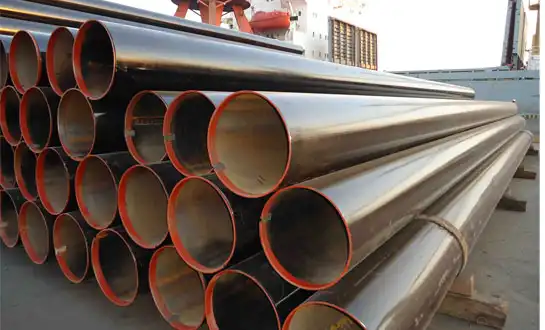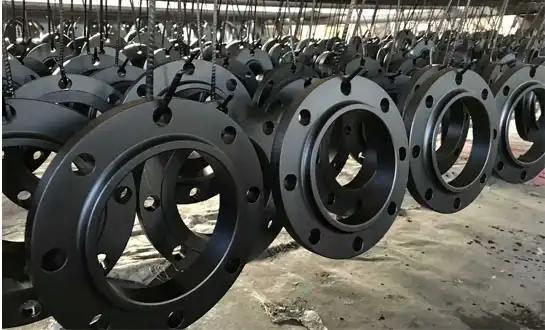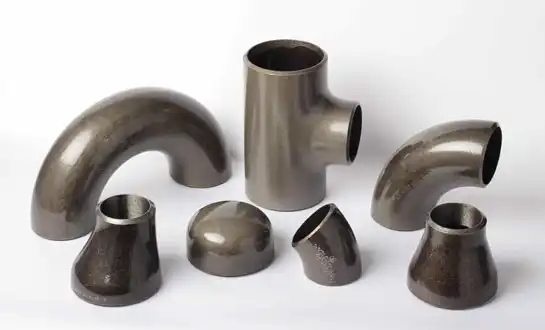Comparing Standard vs. Custom Angle Pipe Bends for Industrial Projects
For projects to be efficient, cost-effective, and reliable in the long term, picking the right angle pipe bends for industrial plumbing systems is very important. Engineers have to make important choices when they need to route pipes through complicated industrial buildings. They may either use conventional bends that are easy to find or buy bespoke angle pipe bends that are made just for the spteeace they need to fit. Standard bends are readily available and cost-effective, whereas bespoke solutions enable exact angular designs that improve flow characteristics and space use. Custom angle pipe bends provide solutions that are made just for you for difficult installations when typical designs cause problems or make things less efficient.
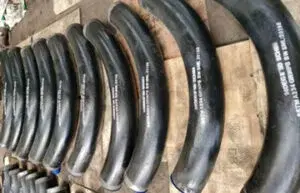
Key Differences Between Standard and Custom Angle Pipe Bends
Manufacturing Processes and Lead Times
Standard angle pipe bends follow established production protocols using preset tooling that creates common configurations such as 45-degree and 90-degree bends. Thanks to economies of scale, these ways of making things allow sellers to keep items in stock and ship them in a few days. However, custom angle pipe bends necessitate dedicated tooling setup, engineering calculations, and quality verification procedures that extend lead times from weeks to months depending on complexity. As part of the custom production process, designs are carefully looked over, choices about materials are made, and samples are made to make sure the end product meets all the requirements. When developing project plans, engineers need to take these longer durations into consideration, especially for critical route tasks where delays change the overall completion dates.
Material Selection and Performance Characteristics
Standard bends typically utilize common carbon steel grades that serve general-purpose applications in water distribution, HVAC systems, and low-pressure industrial processes at competitive price points. Custom angle pipe bends expand material options to include specialized alloys, stainless steel variations, and composite materials engineered for extreme service conditions. When processing corrosive chemicals, high-temperature fluids, or abrasive slurries, custom solutions incorporate materials with enhanced resistance properties that extend service life and reduce maintenance requirements. Things like the chemistry of the fluid, the range of working pressures and temperatures, and the conditions under which the materials will be used are all taken into account when they are chosen.
Cost Analysis and Budget Considerations
Standard angle pipe bends present lower upfront costs due to mass production efficiencies and immediate availability. However, custom angle pipe bends may deliver superior value when evaluated across complete project lifecycles. Custom solutions get rid of the need for extra fittings, welds, and complicated routing plans that raise the cost of installation and create possible leak locations. A single custom angle pipe bend replacing multiple standard components reduces welding time, inspection requirements, and overall material costs while improving system reliability. Custom bends optimized for specific flow conditions minimize friction losses and reduce pumping costs over decades of operation.
Technical Specifications and Application Requirements
Angular Precision and Dimensional Tolerances
Standard angle pipe bends manufacture to industry-accepted tolerance ranges that accommodate typical installation variations. Custom angle pipe bends achieve tighter dimensional controls when projects require exact angular positioning for specialized equipment interfaces or congested spatial envelopes. Precision manufacturing techniques including computer-controlled bending machines and laser measurement systems verify angular accuracy within fractions of degrees. This level of accuracy is very important in the pharmaceutical industry, semiconductor production, and aerospace systems, where the precise flow routes may change the quality of the product or the result of the operation. The dimensional specifications for custom bends include precise radius dimensions, tangent lengths, and wall thickness uniformity throughout the bend section.
Pressure Ratings and Structural Integrity
Standard bends comply with established pressure class ratings defined by codes such as ASME B16.9, providing documented pressure-temperature relationships for common piping applications. Custom angle pipe bends enable pressure rating optimization when projects involve unusual pressure ranges or combined stress scenarios that exceed standard component capabilities. Finite element analysis is used in the design process to look at stress concentrations at bend points. Engineers specify wall thickness schedules, reinforcement configurations, and heat treatment procedures that ensure adequate safety margins under maximum anticipated operating pressures.
Flow Optimization and Hydraulic Performance
Standard angle pipe bends create predictable flow patterns and pressure drop characteristics documented in engineering handbooks. Custom angle pipe bends let you improve hydraulic performance by choosing the best bend radius and making the inside of the pipe more streamlined. Large radius bends reduce flow separation and turbulence that cause pressure losses and increase pumping energy requirements. When custom manufacturing is done, radius-to-diameter ratios may be higher than usual. So, the flow lines are smoother, and there is less chance of friction losses and rusting at high speeds.
Decision Factors for Project Selection
Installation Environment and Spatial Constraints
Standard angle pipe bends work effectively in open areas with adequate space for conventional routing patterns. Custom angle pipe bends are necessary when projects have very limited space, existing equipment conflicts, or architectural limitations that make it impossible to use traditional routing methods. Retrofitting piping systems within operating facilities often encounters obstacles including structural beams and equipment skids that create complex three-dimensional routing requirements. A single custom bend with a specific angular configuration may navigate these constraints where multiple standard fittings would be impossible to install.
Maintenance Accessibility and Future Modifications
Standard angle pipe bends provide familiarity for maintenance personnel and ready availability of replacement components. When you make custom angle pipe bends, you should think about how they will affect upkeep, like how long it will take to change them and what paperwork is needed. However, thoughtfully designed custom solutions can enhance maintenance efficiency by improving access to critical equipment and reducing potential leak points. By placing custom bends in the right places, service loops can be made that allow for heat expansion or make valve removal easier.
Regulatory Compliance and Quality Assurance
Standard angle pipe bends manufactured to recognized standards provide documented compliance pathways that simplify approval processes. Custom angle pipe bends need strict quality control measures that make sure they meet the needs of the project. You need trained welders, good welding skills, and thorough non-destructive testing tools to make things. Traceability standards make guarantee that material certifications, manufacturing records, and inspection findings are always available throughout the component's service life.
Conclusion
You should carefully consider the technical needs, prices, and operating goals when deciding between standard and custom angle pipe turns. Standard parts are cheap and ready to use right away. Custom angle pipe bends, on the other hand, provide you the best performance for difficult space limitations or unusual materials. For a project to be successful, you need to weigh the initial investment against the lifespan value, taking into account how hard it is to install and how well it meets regulatory standards.
FAQ
1. What are the typical lead times for custom angle pipe bends compared to standard options?
Standard angle pipe bends typically ship within days from distributor stock, while custom angle pipe bends require three to twelve weeks depending on complexity, material availability, and fabrication schedules. Getting in touch with manufacturers early on in the planning stages of a project helps set realistic delivery dates.
2. Can custom angle pipe bends be designed to match existing piping systems during retrofit projects?
Yes, bespoke angle pipe bends are the best choice for retrofit projects when existing equipment or structural limitations need exact angular arrangements. Manufacturers work from field measurements or three-dimensional models to fabricate bends that integrate seamlessly with existing systems.
3. How do pressure ratings differ between standard and custom angle pipe bends?
Standard angle pipe bends follow established pressure class ratings defined by industry codes, while custom angle pipe bends can be engineered for specific operating pressures using enhanced wall thicknesses or specialized materials.
4. What documentation should be specified for custom angle pipe bends in critical applications?
Critical applications require comprehensive documentation including detailed fabrication drawings, certified material test reports, welding procedure specifications, heat treatment records, and dimensional inspection reports.
HEBEI RAYOUNG PIPELINE: Your Custom Angle Pipe Bends Manufacturers
At HEBEI RAYOUNG PIPELINE TECHNOLOGY CO., LTD., we understand that exceptional industrial infrastructure demands both standard reliability and custom innovation. As leading pipes and fittings manufacturers with ISO 9001:2015 certification, we deliver high-quality custom angle pipe bends engineered precisely for your unique project requirements. Our comprehensive product lineup, backed by GOST-R and SGS certifications, ensures that whether you need buttweld steel elbows, reducers, flanges, or specialized custom angle pipe bends, every component meets rigorous quality standards.Contact us today at info@hb-steel.com to discuss how our custom angle pipe bends can solve your specific industrial piping challenges.
References
1. American Society of Mechanical Engineers. (2020). Process Piping: ASME Code for Pressure Piping, B31.3. ASME International.
2. Crane Company. (2021). Flow of Fluids Through Valves, Fittings, and Pipe: Technical Paper No. 410. Crane Co.
3. Mohitpour, M., Golshan, H., & Murray, A. (2019). Pipeline Design and Construction: A Practical Approach (4th ed.). ASME Press.
4. Nayyar, M. L. (Ed.). (2022). Piping Handbook (8th ed.). McGraw-Hill Education.
5. Smith, P. R., & Zappe, R. W. (2018). Valve Selection Handbook (6th ed.). Gulf Professional Publishing.
6. Timoshenko, S. P., & Goodier, J. N. (2017). Theory of Elasticity (3rd ed.). McGraw-Hill Education.

Need a quote? Want to see samples? Just say hello. We’re friendly. We’re fast. And we’re ready when you are.
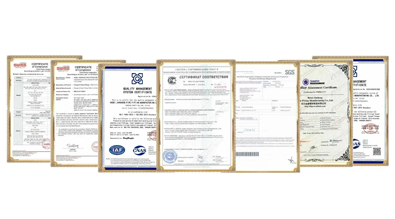
Welcome to RAYOUNG – Strong Pipes, Stronger Promise
